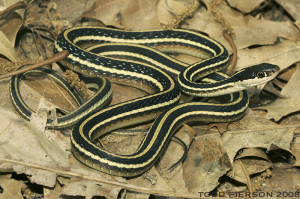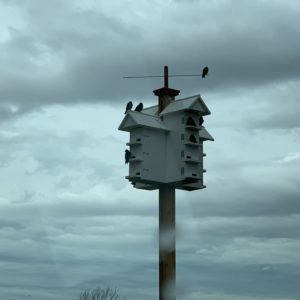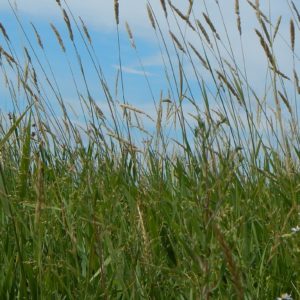Species Spotlight: Eastern Ribbonsnake
Get to know some of the species at risk in the Lac Deschênes IBA with the Species Spotlight, aka “Sp-Spot”. Today meet the: Eastern Ribbonsnake.
 Sp-Spot: Eastern Ribbonsnake
Sp-Spot: Eastern Ribbonsnake
Scientific Name: Thamnophis sauritus
SARA Status: Special Concern; Ontario: Special Concern; Quebec: Likely to be designated
Taxonomic Group: Serpentes
Size: 46 to 86 cm
The eastern ribbonsnake is a beautiful, slender snake that is often confused with the eastern garter snake. They have three yellow stripes along their back on a dark brown or black background. Their chins and throats are white or pale yellow, and their belly is pale green, yellow, or white. The best way to differentiate a ribbonsnake from a garter snake is that ribbon snakes have a yellow “teardrop” scale on the side of their face in front of their eye, whereas garter snakes do not have this teardrop. See the picture for a good view of this teardrop on ribbonsnakes.
Ribbonsnakes prefer wetland habitats, specifically areas with tall grass surrounding ponds. They are often considered a specialist predator on frogs, which is why they rely on wetlands. Ribbonsnakes are non-venomous, and are generally quite calm, although they might secrete musk when picked up. They strike at their prey and swallow them whole, so no venom is necessary. Ribbonsnakes hibernate throughout the winter season in northern North America. They hibernate in rock crevices and burrows that go below the frost line, and stay there while the temperature is below 4°C, typically from late October to early April. Mating typically occurs when they emerge from hibernation, although it occasionally occurs in the fall prior to hibernation. Young are born in late summer, and females can have litters of up to 30 young, but average closer to 10 young.
Although ribbonsnakes are listed as federal species of special concern, they are not considered at risk according to Ontario’s species at risk legislation. They are protected in national parks and federal land in Ontario, but not on provincial land.
Where Else Can You See This Species?
The local subspecies of the eastern ribbonsnake, known as the northern ribbonsnake, is only found from the eastern Great Lakes in Ontario to Nova Scotia. However, the eastern ribbonsnakes can be found as far south as Florida.
Did You Know?
• Ribbonsnakes are very good swimmers, and will often flee into water to escape terrestrial predators
Check back every week to read about a different species at risk that can be found in Lac Deschênes.
You can report sightings of this and other rare species to the Canadian Wildlife Service at (819) 997-2800 or on the MNR Natural Heritage Information Centre website. A photo and a location are very helpful!
We would like to thank our guest blogger William Halliday for this post. William is a PhD student at the University of Ottawa and a volunteer for Nature Canada. William researches the habitat selection behaviours of snakes in the Ottawa area as part of his PhD research.




